| 1 YEAR | I semester | 6 CFU |
| (from ICT) | |
| Ernestina CIANCA | A.Y. 2023-24
📑
|
| Code: 8039522 SSD: ING-INF/03 |

| 1 YEAR | I semester | 6 CFU |
| (from ICT) | |
| Ernestina CIANCA | A.Y. 2023-24
Teaching programs (Schede d’Insegnamento-GOMP)📑
|
| Code: 8039522 SSD: ING-INF/03 |
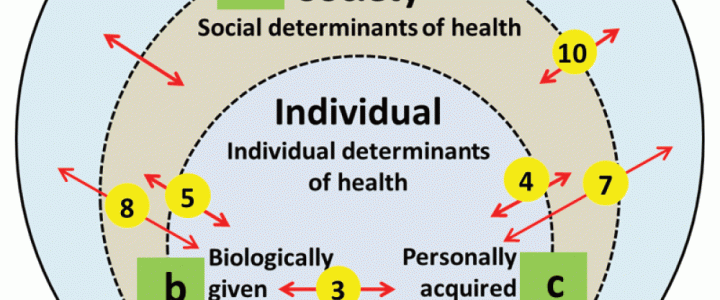
| 2 YEAR | II semester | 6 CFU |
| Patrizio Tomei (4cfu) Eugenio Martinelli (2cfu) |
A.Y. 2023-24 |
| SANTOSUOSSO Giovanni Luca | A.Y. 2024-25 not be activated |
| A.Y. 2025-26 (new name “Identification and Neural Networks” |
|
| Didatticaweb | |
| Code: 80300088 SSD: ING-INF/04 |
Pre-requirement: The basics of systems theory and control are required.
LEARNING OUTCOMES: The course aims to provide the basic techniques for the design of predictors, filters, and adaptive controllers.
KNOWLEDGE AND UNDERSTANDING: Students must obtain a detailed understanding of design techniques with the help of MATLAB-SIMULINK to solve industrial problems of adaptive filtering, adaptive prediction, and adaptive control.
APPLYING KNOWLEDGE AND UNDERSTANDING: Students must be able to apply the project techniques learned in the course even in different industrial situations than those examined in the various phases of the course.
MAKING JUDGEMENTS: Students must be able to apply the appropriate design technique to the specific cases examined, choosing the most effective algorithms.
COMMUNICATION SKILLS: Students must be able to communicate using the terminology used for filtering, prediction, and adaptive control. They must also be able to provide logical and progressive exposures starting from the basics, from structural properties, from modeling to the design of algorithms, without requiring particular prerequisites. Students are believed to be able to understand the main results of a technical publication on the course topics. Guided individual projects (which include the use of Matlab-Simulink) require assiduous participation and exchange of ideas.
LEARNING SKILLS: Students must be able to identify the appropriate techniques and algorithms in real cases that arise in industrial applications. Furthermore, it is believed that students have the ability to modify the algorithms learned during the course in order to adapt them to particular situations under consideration.
Texts
Adaptive Filtering Prediction and Control, Graham C. Goodwin, Kwai Sang Sin, Dover Publications, 2009.

| 2 YEAR | 1 semester | 12 CFU |
| Patrick LONGHI (3cfu) Giancarlo ORENGO (3cfu) Gian Carlo CARDARILLI (4cfu) Luca DI NUNZIO (2cfu) |
since A.Y. 2019-20 |
| M-5519 – ELECTRONICS OF IOT (6cfu) M-5520 – DESIGN OF EMBEDDED SYSTEMS FOR MECHATRONICS (6cfu) |
|
| Code: 8039795 SSD: ING-INF/01 |
EDUCATIONAL OBJECTIVES:
The objectives of the course are:
1) to provide the tools to carry out a radio link assessment in a real application context.
2) learn the fundamental parameters of the antennas used in IoT applications
3) provide the tools to interpret the electrical diagram of the RF front end of a typical trans receiver.
KNOWLEDGE AND UNDERSTANDING:
Provide the fundamental tools to understand the most advanced and updated content from publications, magazines, forums, blogs, etc., to always be updated on the state of the art.
ABILITY TO APPLY KNOWLEDGE AND UNDERSTANDING:
Practical radio link budget, electronic noise evaluation on receiver behavior, installation effects of the antennas, understanding of key parameters of commonly used antennas in the targeted scenario, analysis of an RF transceiver block diagram
AUTONOMY OF JUDGMENT:
With the enormous amount of information that is available today to developers of IoT applications, the course seeks to develop the ability of the student to select the highest quality and most validated content.
COMMUNICATION SKILLS:
The final test is based on an oral exam in which the student illustrates a part of the module
LEARNING ABILITY:
The course aims to develop in the student the ability to independently learn new and constantly updated content because the knowledge acquired today soon becomes obsolete.
SYLLABUS:
(Longhi):
Introduction to radiating elements and their key parameters.
Ideal and practical link budget.
The effect of noise in electronic receivers, figures of merit and mathematical modelling. Receiver G/T.
Practical aspects of IoT RF systems
RFID
Radiating elements key parameters, gain, directivity, HPBW, nulls, radiation pattern, polarization, and input impedance. Some practical cases: the mono/di-pole family, microstrip antennas, parabolic reflector, wearables
Introduction to RF transceiver systems and key-components (switches, HPA, LNA, mixers, frequency generators).
(G.Orengo):
Summary of Digital Electronics: digital encoding of information, binary (fixed and floating point), hexadecimal and ASCII; operators and main logic circuits, registers and memories, programmable devices. Prototyping boards for IoT (Arduino, Rasberry), Systems on Chip (SoC), architecture of a microcontroller, description of the Arduino Uno board. Programming languages (assembly, compiled, interpreted), structure of an Arduino sketch (libraries, setups, loops, functions, interrupts), programming elements in C (variables, math and logical operations, cycles, conditional statements). Use of digital and analog I/O ports (A/D conversion, PWM output). Synchronous and asynchronous serial communication modes, wired (USB) and wireless with Bluetooth, RF and WiFi modules. Remote control of electronic modules (sensors, dc stepper and servo motors, LED/LCD displays etc.) from portable devices (Windows, IoS), through applications developed in Processing and Python, and mobile (Android), through Apps developed with the MIT App Inventor platform. Internet protocols for device local/remote control through WiFi modules connected as access points/clients to web platforms or public/private cloud servers controlled by laptops and/or mobile devices.
(G.Cardarilli):
– Introduction to the Internet of Things (IoT) and embedded systems
– Wireless and mobile communications
– The Sensors
– Low power processing
– IoT and machine learning applications
– Future developments in the field of IoT and embedded systems
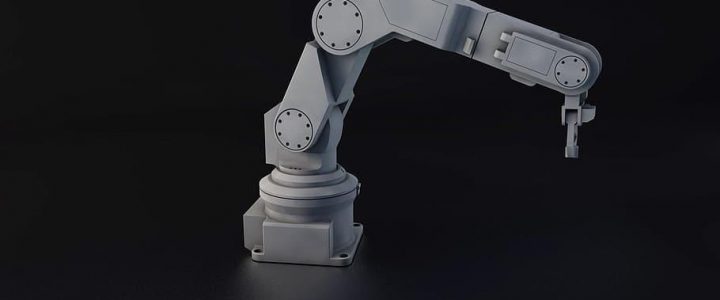
| 2 YEAR |
1 semester | 9 CFU |
| Riccardo MARINO | Since 2019-20 |
| Teaching programs (Schede d’Insegnamento-GOMP)📑
Code: 8039823 |
LEARNING OUTCOMES:
Ability to understand scientific papers on the control of mechanical systems
KNOWLEDGE AND UNDERSTANDING:
Knowledge of dynamic modeling of mechanical systems. Knowledge of basic feedback control techniques for single input single output systems and of decoupling techniques for multi input multi output nonlinear systems
APPLYING KNOWLEDGE AND UNDERSTANDING:
Ability to simulate using Matlab Simulink complex controlled mechanical systems
MAKING JUDGEMENTS:
Ability to evaluate stability, robustness, and performance of a control system
COMMUNICATION SKILLS: Ability to present and discuss an autonomous design project
LEARNING SKILLS: Ability to fully understand a scientific paper on the control of mechanical systems
SYLLABUS:
BASIC CONTROL TOOLS
Bounded- input bounded- output linear systems. Pole placement theorem for controllable and observable linear systems. Luenberger observers for observable systems. Design of dynamic compensators for linear systems. Integral feedback control to reject constant disturbances. PID control. System inverses for minimum phase linear systems. The combination of feedback and feedforward control actions.
ADVANCED CONTROL TOOLS
Linear approximations of nonlinear control systems about operating conditions. The definition of region of attraction for an operating condition. Output feedback compensators with integral actions to control nonlinear systems about a given operating condition. Liapunov matrix equations to determine quadratic Liapunov functions and assess the region of attraction. The definition of the sensitivity transfer function and its properties. The gang of four: sensitivity, complementary sensitivity, load sensitivity and noise sensitivity functions. How to determine the robustness of a control loop using the gang of four functions. Bode’s integral formula and the limitations imposed by unstable open loop poles. Youla parametrization to design stable compensation. Kalman filters, Riccati equations and robust control design.
CONTROL DESIGN FOR MULTIVARIABLE NONLINEAR SYSTEMS
Relative degree for a single input single output nonlinear system. State feedback control design for input-output linearization. State feedback linearization when the relative degree is equal to the state space dimension. The definition of nonlinear inverse systems. Relative degrees or decoupling indices for multivariable (multi-input, multi-output) nonlinear systems. The definition of the decoupling matrix. State feedback control design for input-output linearization when the decoupling matrix is full rank using the Penrose pseudoinverse. State feedback linearization when the sum of relative degrees is equal to the state space dimension and the decoupling matrix is full rank.
CASE STUDIES OF NONLINEAR MECHANICAL CONTROL SYSTEMS
Control of bycicles, robots, vehicles and aircrafts
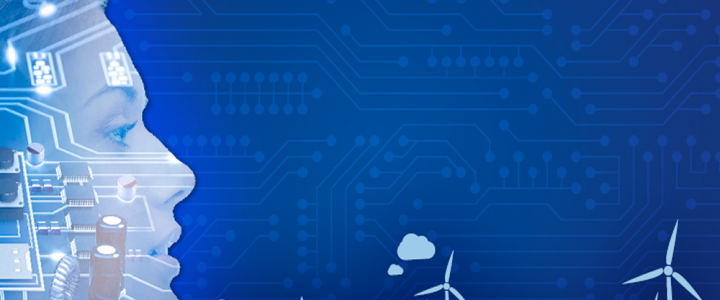
| 1 YEAR | I semester | 6 CFU |
| Marco Re |
since A.Y. 2021-25 |
| A.Y. 2025-26
Teaching programs (Schede d’Insegnamento-GOMP)📑
|
|
| Didatticaweb
Code: 80300061 |
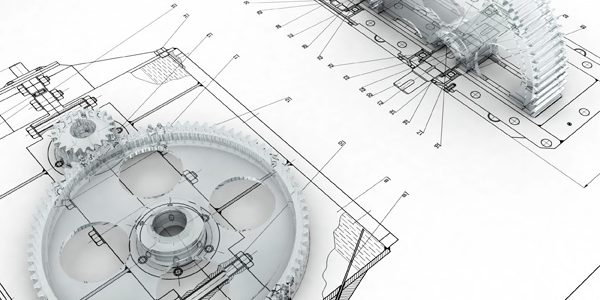
| 1 YEAR |
1 semester | 6 CFU |
| Marco Ceccarelli | A.Y. 2021-22 to 2024-25
A.Y. 2025-26 new name: 80300216 MECHANICS OF SYSTEMS FOR SIMULATIONS |
| Code: 803000062 SSD: ING-IND-13 (by Engineering Sciences) |
OBJECTIVES
LEARNING OUTCOMES: The course aims to teach students the knowledge and tools that are needed to address the issues that are related to the identification, modeling, analysis, and design of multi-body planar systems in English language and terminology
KNOWLEDGE AND UNDERSTANDING: modeling and procedures to recognize the structure and characteristics of mechanisms and machines
APPLYING KNOWLEDGE AND UNDERSTANDING: acquisition of analysis procedures for the understanding of kinematic and dynamic characteristics of mechanisms and machines
MAKING JUDGEMENTS: possibility of judging the functionality of mechanisms and machines with their own qualitative and quantitative assessments
COMMUNICATION SKILLS: learning technical terminology and procedures for presenting the performance of mechanisms
LEARNING SKILLS: learning technical terminology and procedures for the presentation of the performance of mechanisms
PREREQUISITES: knowledge of basic mechanics of rigid bodies and computation skills
SYLLABUS
Structure and classification of planar mechanical systems, kinematic modeling, mobility analysis, graphical approaches of kinematics analysis, kinematic analysis with computer-oriented algorithms; dynamics and statics modeling, graphical approaches of dynamics analysis, dynamic analysis with computer-oriented algorithms, performance evaluation; elements of mechanical transmissions.
BOOKS:
Lopez-Cajùn C., Ceccarelli M., Mecanismos, Trillas, Città del Messico
Shigley J.E., Pennock G.R., Uicker J.J., “Theory of Machines and Mechanisms”, McGraw-Hill, New York
Handnotes and papers by the teachers
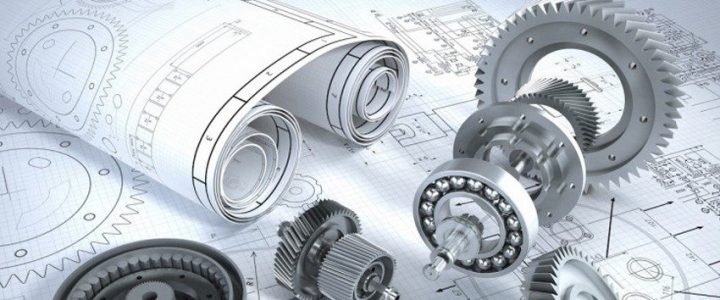
| 2 YEAR | II semester | 6 CFU |
| Luciano CANTONE | since A.Y. 2018-19 – program 📑 |
| (by Engineering Sciences) | |
| Code: 80300065 SSD:ING-IND/14 |
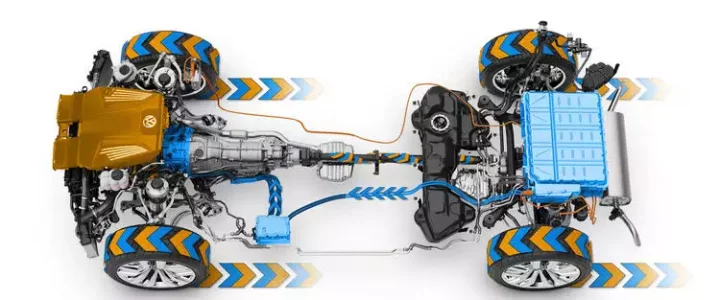
| 1 YEAR (Block C)
2 YEAR (Blocks A|B|D|E) |
II semester | 9 CFU |
| Stefano CORDINER (6/9 cfu) Lorenzo BARTOLUCCI (3/9 cfu) |
A.Y. 2021-22
Internal Combustion Engines |
| Since A.Y. 2022-23 – program 📑
POWERTRAIN TECHNOLOGIES FOR FUTURE MOBILITY |
|
| Code: 80300079
80300077 M-6264 |
PREREQUISITES: Technical Physics, Fluid Machinery
FORMATIVE OBJECTIVES
LEARNING OUTCOMES:
The course aims to provide students with in-depth scientific training to correctly address the problems of designing, choosing and managing new propulsion systems for sustainable mobility starting from current solutions with internal combustion engines as well as creating the conditions for the development of innovative and low environmental impact solutions. To this end, students will develop in-depth knowledge of the operating principles of propulsion systems for transport and will learn simulation procedures for their verification and sizing. Finally, particular attention is dedicated to the most recent technological development of internal combustion engine technology aimed at overcoming current limits in terms of emissions and efficiency and defining innovative scenarios for sustainable mobility.
KNOWLEDGE AND UNDERSTANDING:
Course aim is to provide the students with tools for the analysis of the performances and the evaluation of proper design solution for internal combustion engines and their core components. At the end of the course, the student will be able to independently understand the functional link between design variables and the performance of internal combustion engines also in case of innovative design,
APPLYING KNOWLEDGE AND UNDERSTANDING:
The course, through the analysis of specific problems and quantitative data, is aimed at providing the tools for analysis and evaluation of the effects of different design choices. The theme of energy efficiency and pollution reduction are at the heart of the teaching organization. The student will be able to interpret and propose design solutions, even innovative ones, adapted to the specificity of the problems that are presented to him.
MAKING JUDGEMENTS:
By studying theoretical and practical aspects of engine design and critically assessing the influence of different design variables, the student will be able to improve his judgment and proposal in relation to design. and the management of internal combustion engines.
COMMUNICATION SKILLS:
The presentation of the theoretical and application profiles underlying the operation of internal combustion engines will be carried out to allow the knowledge of the technical language of the appropriate specialist terminology; The development of communication skills, both oral and written will also be stimulated through classroom discussion, participation in seminary activities and through final tests.
LEARNING SKILLS:
The learning capacity, even individual, will be stimulated through numerical exercises, the drafting of papers on specialized topics, the discussion in the classroom, also aimed at verifying the actual understanding of the topics treated. The learning capacity will also be stimulated by integrative educational aids (journal articles and economic newspapers) in order to develop autonomous application capabilities.
SYLLABUS:
Legislation evolution on Internal Combustin Engines. Definition of the performance of the propulsion systems and their operating characteristics in relation to the mission, driving cycles. Generalities on reciprocating internal combustion engines: Characteristics and classification, thermodynamic and performance analysis of reciprocating internal combustion engines.
Air supply for 4-stroke engines: volumetric efficiency and its evaluation; Design elements of intake systems: quasi-stationary effects; valve sizing; influence of other engine parameters; Variable Valve Actuation systems. 2-stroke engines: construction schemes; Non-stationary phenomena in intake and exhaust ducts: inertia and wave propagation; variable geometry systems; calculation models; Supercharging.
In cylinder charge Motion: Turbulence; swirl, squish, tumble; stratified charge engines.
Traditional and alternative fuels; Properties of motor fuels. Generalities: combustibles; stoichiometric air; calorific value Gaseous fuels: natural gas, hydrogen and mixtures. bio-ethanol, bio-diesel and DME. Characteristics and their use in engines: technical solutions, performance and emissions.
Fuel supply Premixed combustion engines; Non-pre-mixed combustion engines.
Combustion : Analytical elements of combustion; thermodynamics of combustion processes; calculation of the chemical composition and of the adiabatic equilibrium temperature ; transport phenomena ; chemical kinetics.
Pollutant emissions and abatement systems; Emissions: formation mechanisms, effects on health and the environment, measurement of emissions; influence of engine parameters; Innovative combustion solutions, Advanced Thermodynamic Cycles. Sustainable mobility. Operating principles of hybrid vehicles: series and parallel solution; motors a.c. and electrical employees; regenerative braking; lithium batteries, performance and prospects. Plug-in hybrid vehicles, i.c. engines “range extender”. Innovative control logics for optimal powersplitting between the different energy sources. Electric vehicles, characteristics and prospects. Numerical simulation tools will be presented for all course topics
ATTENDANCE
Course attendance is strongly recommended. During the course, students are invited to interact with the Professor during the class or office hours for any clarification or insight in specific topics related to the program.
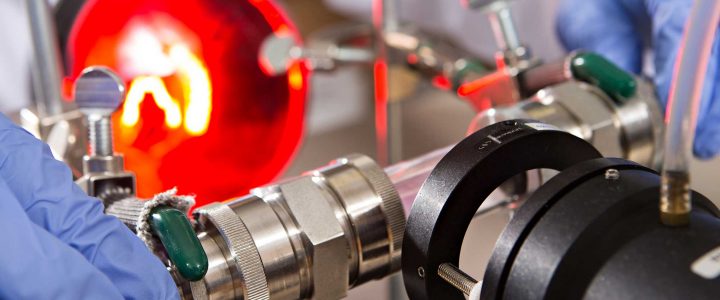
| 1 YEAR | II semester | 6 CFU |
| Michela GELFUSA | A.Y. 2021-22 (by Engineering Sciences)
A.Y. 2024-25 (last year) |
| Code: 80300063 SSD: ING-IND/10 (by Engineering Sciences) |
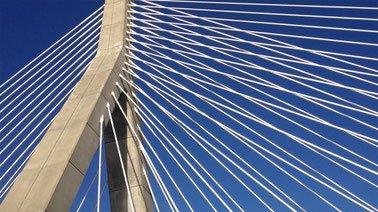
| 1 YEAR | II semester | 6 CFU |
| Andrea Micheletti | A.Y. 2021-22 (9 cfu) |
| Andrea Micheletti | A.Y. 2022-23 A.Y. 2024-25 (6 cfu) – program 📑 |
| Code: 80300064 SSD: ICAR/08 (by Engineering Sciences) |
FORMATIVE OBJECTIVES
LEARNING OUTCOMES: The goal of this course, composed of two Modules, is to provide the student with basic knowledge of the mechanics of linearly elastic structures and of the strength of materials. By completing this class successfully, the student will be able to compute simple structural elements and reasonably complex structures.
KNOWLEDGE AND UNDERSTANDING: At the end of this course, the student will be able to:
– compute constraint reactions and internal actions in rigid-body systems and beams subjected to point/distributed forces and couples
– compute centroid position and central principal second-order moments of area distributions
– understand the formal structure of the theory of linear elasticity for beams and 3D bodies
– analyze strain and stress states in 3D bodies
– compute the stress state in beams subjected to uniaxial bending, biaxial bending, eccentric axial force
– understand the behaviour of beams subjected to shear with bending and torsion
– understand how to compute displacements/rotations in isostatic beam systems, how to solve statically underdetermined systems, how to apply yield criteria, and how to design beams against buckling
APPLYING KNOWLEDGE AND UNDERSTANDING: The student will apply the knowledge and understanding skills developed during the course to the analysis of practical problems. This includes the analysis of linearly elastic structures and structural members in terms of strength and stiffness.
MAKING JUDGEMENTS: The student will have to demonstrate his awareness of the modeling assumptions useful to describe and calculate structural elements, as well as his critical judgement on the static response of elastic structures under loads, in terms of stresses, strains, and displacements.
COMMUNICATION SKILLS: The student will demonstrate, mostly during the oral test, his capacity of analyzing and computing the static response of linearly elastic structures, as well as his knowledge of the underlying theoretical models.
LEARNING SKILLS: The student will get familiar with the modeling of structures and structural elements in practical problems, mostly during the development of his skills for the written test. This mainly concerns beams and three-dimensional bodies.
PREREQUISITES: The student should have already attended the basic courses of calculus, geometry, and physics.
It is required that the student has good skills with regard to differential and integral calculus, linear algebra and matrix calculations.
SYLLABUS:
Together with the other Module of this course, the following topics are covered.
Review of basic notions of vector and tensor algebra and calculus.
Kinematics and statics of rigid-body systems.
Geometry of area distributions.
Strain and stress in 3D continuous bodies and beam-like bodies.
Virtual power and virtual work equation for beams and 3D bodies.
One-dimensional beam models: Bernoulli-Navier model, Timoshenko model, constitutive equations, governing differential equations.
Constitutive equation for linearly elastic and isotropic bodies, material moduli.
Hypothesis in linear elasticity, equilibrium problem for linearly elastic beams and 3D bodies.
Three-dimensional beam model: the Saint-Venant problem, uniaxial and biaxial bending, eccentric axial force, shear and bending, torsion.
Elastic energy of beams and 3D bodies, work-energy theorem, Betti’s reciprocal theorem, Castigliano’s theorem.
Yield criteria (maximum normal stress, maximum tangential stress, maximum elastic energy, maximum distortion energy).
Buckling instability, bifurcation diagrams, load and geometry imperfections, Euler buckling load, design against buckling.
Basic notions on the finite element method and structural analysis software.